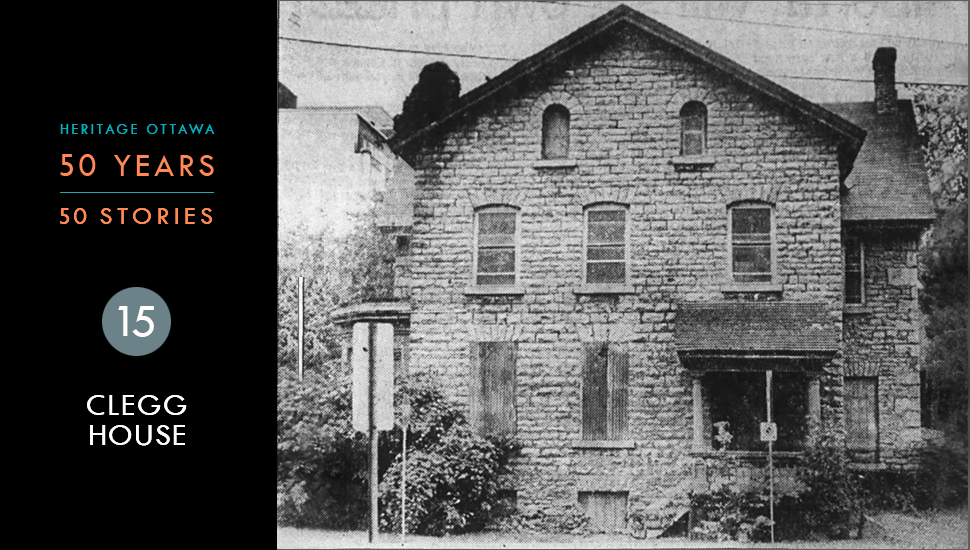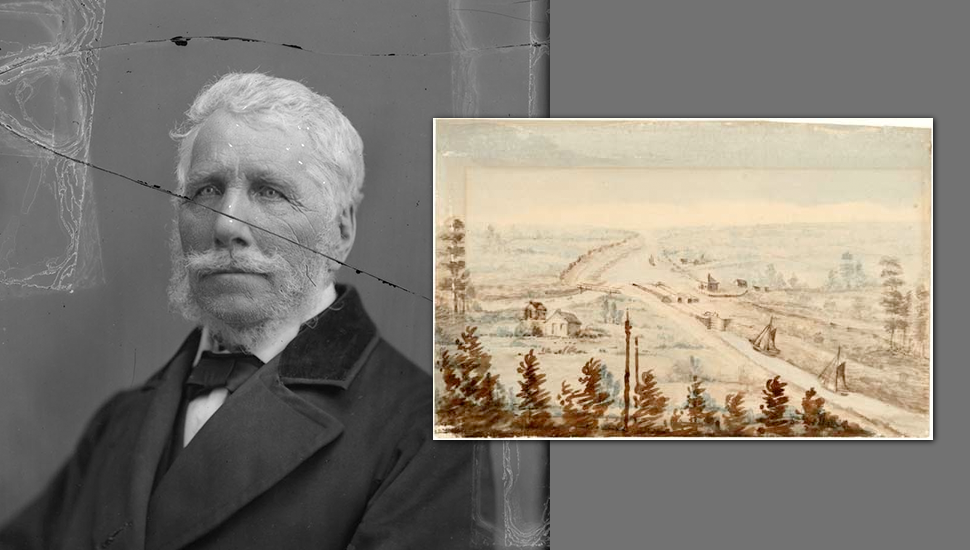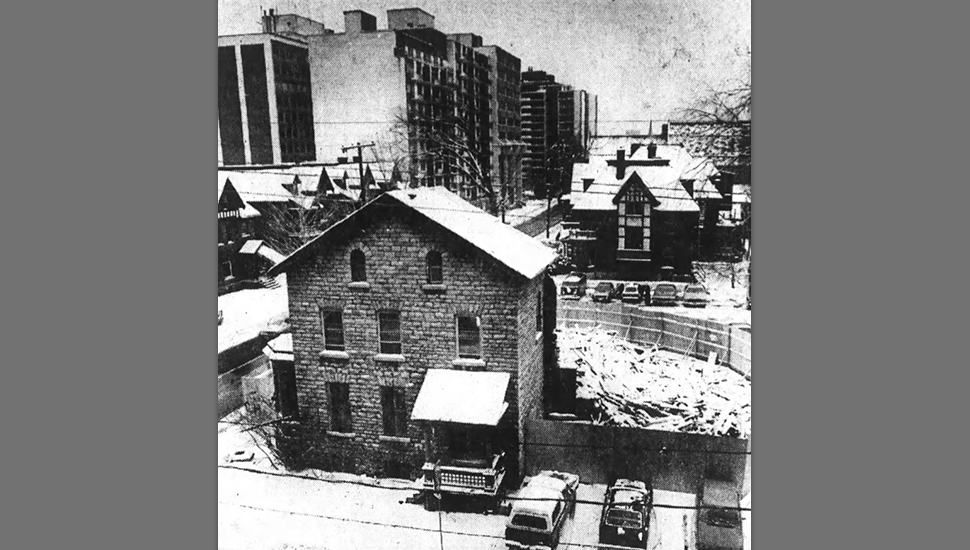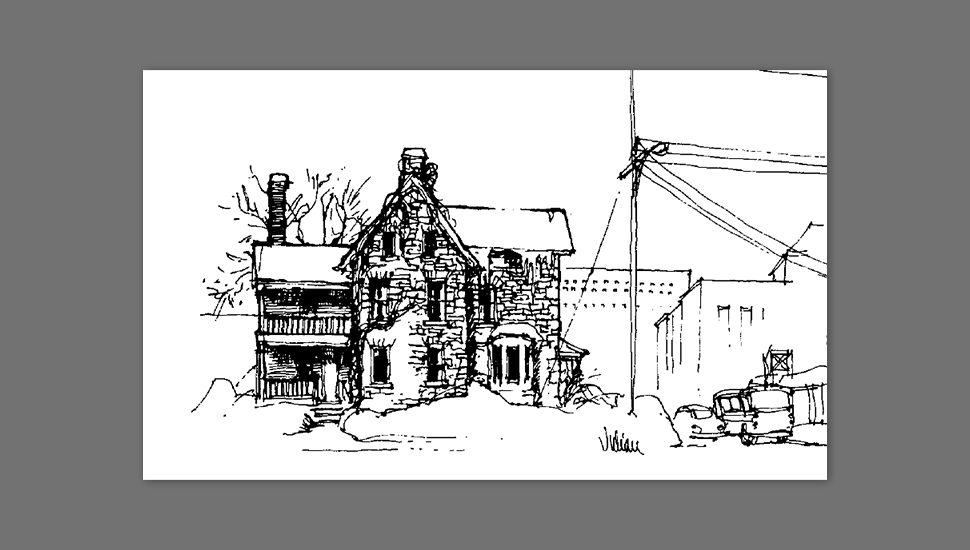15. Clegg House
Constructed: c. 1865-1866 | Demolished: 1982
Architect: Unknown
Location: 136 Bay Street, Ottawa
The Clegg House, located at the corner of Bay and Queen streets, was built circa 1866 on land purchased some 20 years earlier from Nicholas Sparks by Captain William T. Clegg (1796-1894).
A member of Lt.-Col. John By’s Royal Engineers, Captain Clegg worked on the building of the Rideau Canal as an ordinance paymaster, artist and route selector.
It is believed that Clegg lived in the house until 1869 when he moved to live with his daughter, Barbara Noel. The Clegg family retained ownership of the house for several decades for use as an income property. Subsequent residents included well-known Ottawa lawyer G.W. Wickstead, chief clerk of the House of Commons.
In 1911, Clegg House was sold to Ottawa lawyer, Louis W. Coutlée, who had distinguished himself in Manitoba as a Major commanding the Winnipeg Field Battery during the North-West Rebellion.
Clegg House was a solid, 2 ½ storey, ‘T’ shaped structure with gable roof built of regular coursed rubble stone. The house had a combination of flat, segmental and semi-circular arched windows, a south facing oriel window and an unusual side hall floor plan. A later 2-storey brick addition was added on the west side of the building.
As well as a large main floor drawing room, dining room, kitchen and pantry, Clegg House is reported to have had three fireplaces, nine bedrooms and servants’ quarters, with ten foot ceilings and two-foot thick walls.
Clegg House was jointly purchased by William Humphries and St. Peter’s Evangelical Lutheran Church circa 1969. The church acquired full ownership in 1974 and operated the house as rental apartments.
The threat to Clegg House emerged in late 1978 when the Church, considering its demolition in order to create an expanded parking area, evicted the tenants.
In June 1979 City Council designated Clegg House under Part IV of the Ontario Heritage Act and turned down the church’s application for a demolition permit. Early on Saturday October 27, 1979, local architect and Heritage Ottawa member, Wynn Davies, witnessed a bulldozer clawing into the building, without a permit. A major portion of the house was ripped apart. The November issue of the Heritage Ottawa Newsletter noted:
“If it had not been for the timely intervention of Wynn Davies, … who witnessed the attack from his apartment across the street, the entire house would now be rubble.”
Authorities were alerted by Heritage Ottawa and a stop-work order was imposed. A media frenzy ensued as heritage-conscious citizens and prominent Ottawans turned out in force the next day carrying placards and distributing leaflets to parishioners.
The Church challenged the City all the way to the Supreme Court of Canada. In the end, the City lost the case because it had failed to provide formal written notice of the rejected building permit within the 90 day period allotted under the Act. In December, 1982, the City was forced to repeal the bylaw designating the Clegg House, and permit its complete demolition.
The site is now used as a fee-based public parking lot. It is available to the church’s parishioners for Sunday parking.





